Desert landscaping, xeriscaping, dry gardening, water-wise gardening or drought-friendly gardening. No matter what you call it, gardening with succulent plants is becoming more and more popular around the world. Eco-conscious homeowners are searching for ways to create beautiful but low-water gardens that can thrive in a dry (or any) climate. And the good news here is that there are so many stunning succulent garden ideas that will work for any backyard, front yard or even inside an apartment.
Succulents come in a dizzying array of shapes, colours and sizes. Everything from drought-tolerant grasses to mats of spherical rosettes to statuesque columnar forms. They’re typically graphic plants boasting unusual textures, luminous colours and sculptural silhouettes. But the one thing that unites them all is their ability to store water in their leaves. This lets them survive and thrive in dry and drought-prone climates.
There are generally two types of succulents. There are the ones that don’t do well in the cold (e.g.: crassula, echeveria, aeonium, jade plants, portulacaria, senecio, aloe). And then there are the ones that do (e.g. agave, stonecrop). Your best bet is to shop at your local nursery as they will know which ones suit your local environment best. But generally speaking, succulents from places in the world that have a similar dry, windy, salty, coastal climate will also do well here.
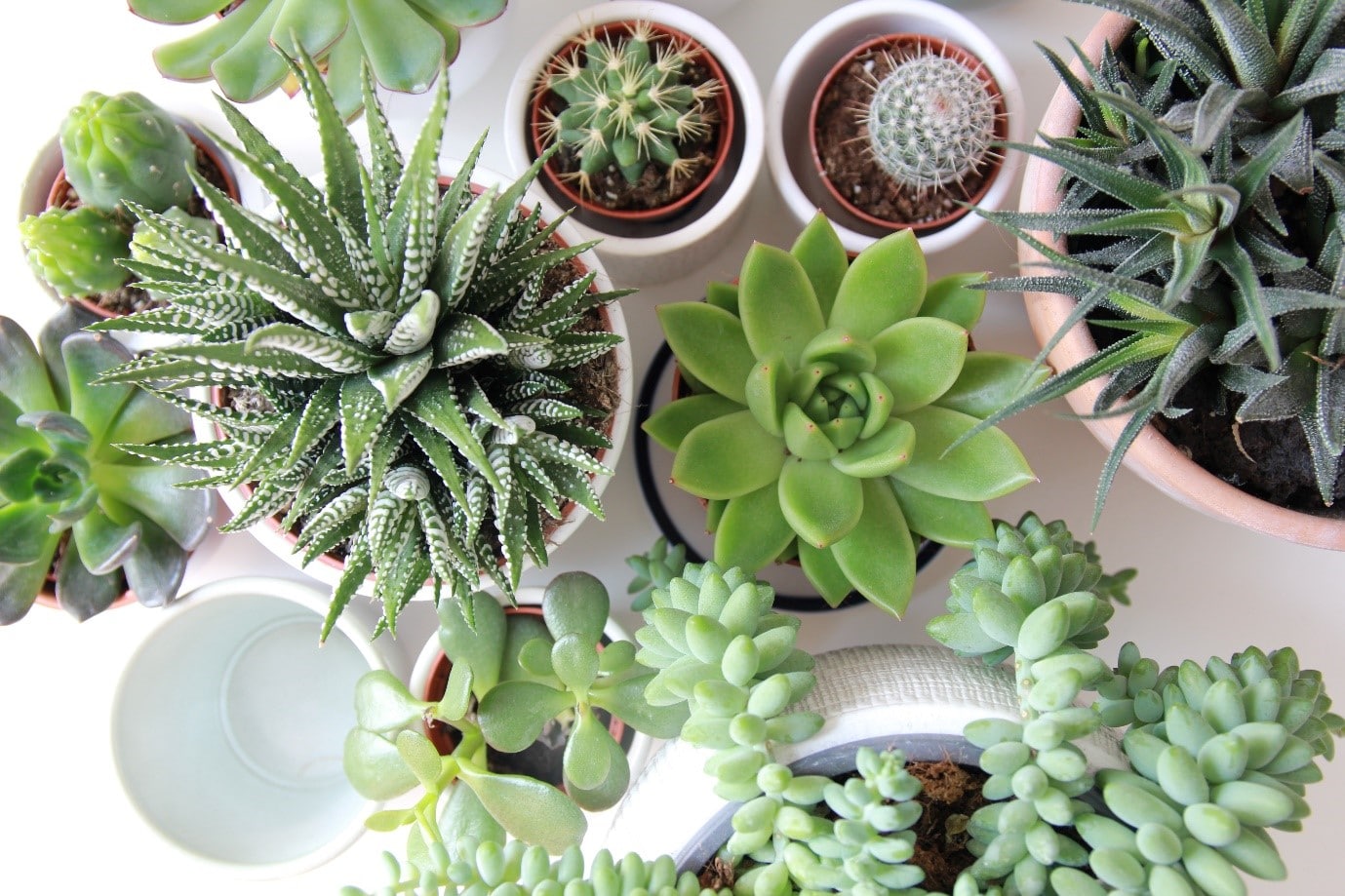
Creating a succulent garden generally follows the same steps:
- Begin with your hardscaping of paths and walkways
- Then add your drought-resistant plants
- Place your largest items (e.g. palms, large cacti)
- Then fill with smaller, lower-lying succulents (e.g. agaves, chalksticks)
Let’s take a look at 32 succulent garden ideas that are chock-full of foliage and blooms hardy enough to live in our harsh climatic conditions.
1. Front yard succulent garden ideas
Succulent garden design is all about mixing unexpected combinations of these hardy plants. The aim is to generate high contrast and create a striking landscape that effortlessly thrives in our climate. And front yards are the perfect place to show off a stunning succulent garden. A succulent front garden might feature a mix of natives and imported succulents. For example, senecio serpens (blue chalksticks) and chrysocephalum apiculatum (yellow buttons).
Looking to improve your curb appeal (you know that first impression that people have of your home)? Check out also these fabulous front garden ideas.
2. Bold contrasting succulents
Blending a variety of succulent shapes, sizes, foliages and textures creates plenty of drama and dynamism. Have a simple muted blue and green succulent colour palette? Mix plants of varying heights and shapes to create a pleasing sculptural effect.
Get an experienced garden designer help you achieve your ideal succulent garden ideas.
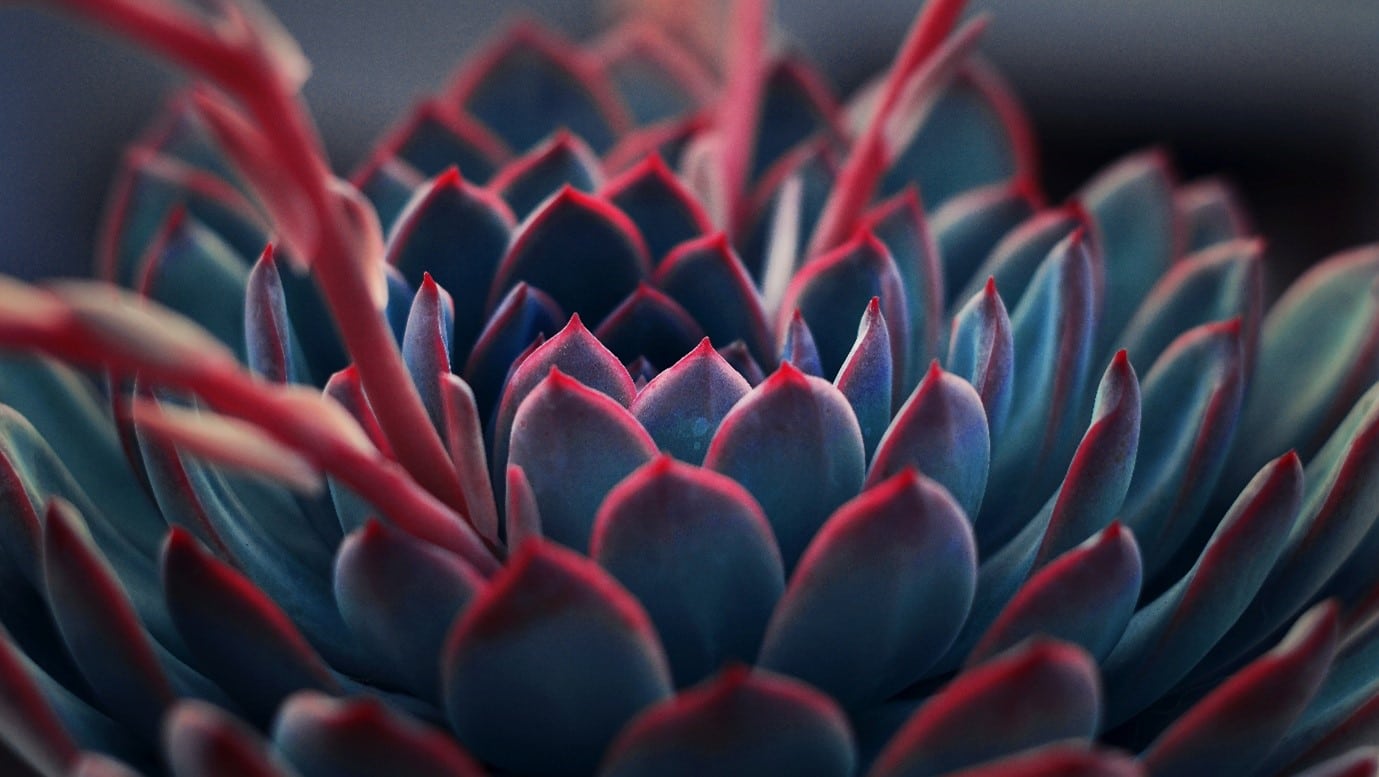
3. Wild colour
Succulents come in an unexpected array of colours. Think gold barrel cacti, or pink-bloomed penstemons. Penstemons are native to the Joshua Tree National Park region in the US. I love the fuzzy halos these American cacti have, as though the plants have magical glowing auras.
4. Accent plants
Succulents make wonderful accent plants thanks to their striking structural shapes. They’re very well suited to a minimalist aesthetic and their impact can be enhanced by contrasting them against pale crushed gravel. Try to choose plants with similar water needs—like succulent agaves mixed asparagus ferns.
Succulents make perfect accent plants in an otherwise minimalist setting. If you intend to pursue a clean minimalist aesthetic, you’ll probably want to start by clearing out your garden space to achieve a blank slate. You can easily get some help with that—whether with a general garden tidy-up or with woodchipping as well.
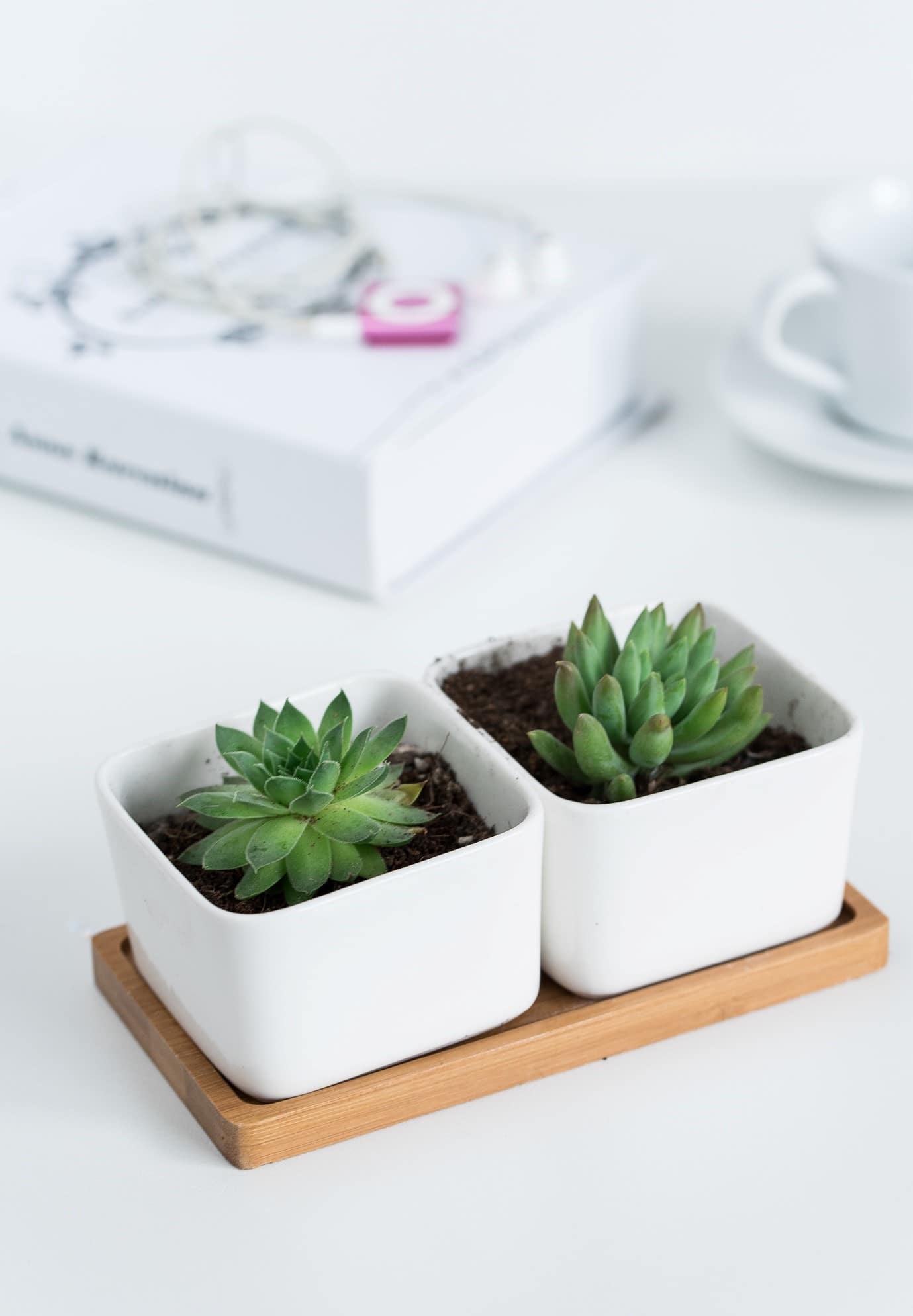
5. Towering cacti
Check out the well-established succulent garden at the home of artist Philip Drummond. He has created what’s been described as a botanical masterpiece from a bustling combination of natives and succulents. Australian trees like banksia are juxtaposed with a variety of traditional cacti. There’s everything from small barrel cacti with orange blooms to classic, large columnar cacti. His vision was to have a rambling pathway walled in by plants that make walking through it “an adventure”.
If you love the look of large cacti, your best bet is to buy them already fully grown, as they are usually quite slow-growing, but be prepared to pay more.
6. Native succulent garden ideas
The benefit of using native succulents is that they will usually establish themselves more quickly. They also work very harmoniously with other native plants. You can put together a beautiful native succulent front garden with contrasting textures and a rainbow of colours. Think kangaroo paw, colourful grasses and a few sculptural plants.
Knowing what will work in your garden, due to sunlight, climate and access to water can be a little tricky. You can either get help from your local nursery, or from a landscaper in your area.
7. Desertscape
The mid-century Palm Springs succulent garden aesthetic is a classic. It usually means having just a simple selection of striking plants to create a killer aesthetic. For example, a mix of golden barrel cacti, columnar cacti, spiky agaves and iridescent blue senecio (chalksticks). Setting the plants into gravel or paved hardscaping helps them stand out. And the result is a super low maintenance garden.
8. Palms and succulents
Palm trees and traditional cacti are a much-loved pairing as they evoke the popular “Palm Springs” coastal aesthetic. Take a look at the home of style influencer Amanda Shadforth in South Queensland. It’s the perfect example of modern, minimalist coastal style. It features a low maintenance combo of palms and cacti in a gravel setting, surrounded by a similarly graphic paving design.
Interested in paving? You might also check out our recent article on paving ideas.
9. Yucca succulent plant
The Mexican Yucca plant is not, in fact, a true succulent. But it’s still often favoured for inclusion in succulent gardens. That’s because of its architectural aesthetic and its ability to withstand very dry climates. It features an impressive palm-like appearance and coarse, sword-like leaves. And it makes an awesome statement plant that offers substantial privacy to houses. Smaller yuccas also make wonderful container plants, especially when contrasted with finer-textured foliage.
10. Front yard feature
Succulent gardens can create a landscape that looks like it’s from another planet. Want to create the perfect magical desert landscape? Plant alien-like succulents with unusual forms, and scatter large boulders amongst them.
11. Aloe succulent garden idea
We’ve all heard of the amazing succulent aloe vera (or “true aloe”), with the plant being well known for the healing properties of the latex in its leaves. But there are actually another 399 varieties of aloe out there, ranging in size from fat little midgets to tall trees. Landscape designers will often incorporate larger aloes or tree aloes into their planting mix. Sometimes they are chosen for their colourful blooms.
12. Beachy Boho succulent garden ideas
Many imported succulents and cacti work well due to similar dry climates. Often they hail from coastal towns in Mexico and the US, in harsh, salty beachy climates. They’ve grown to withstand the blazing sun and windy, salty air. And their classic desert look will always bring that laidback coastal vibe.
If you’re like me and you’re a busy working person who sometimes forgets to keep up with the garden maintenance, don’t be shy about getting some help with it!
13. Water wisdom
One of the most gorgeous succulent gardens I’ve come across is that of American elder Ruth Bancroft, aka her “secret garden”. She’s regarded as something of a pioneer in water-wise gardening in the US, and in championing the huge diversity in the world of succulents. Her garden is an exquisite example of how to combine plants creatively in ways that conserve water. Her dramatic landscape compositions elevate foliage to the same status as flowers. And there’s a premium on texture, form and contrast. Well worth looking up!
14. A simple collection
They boast unusual, somewhat prehistoric and sometimes quite wacky, shapes and silhouettes. As such, succulents perfect for an eye-catching container arrangement. A patio setting is ideal for these plants that love a dry, sunny spot.
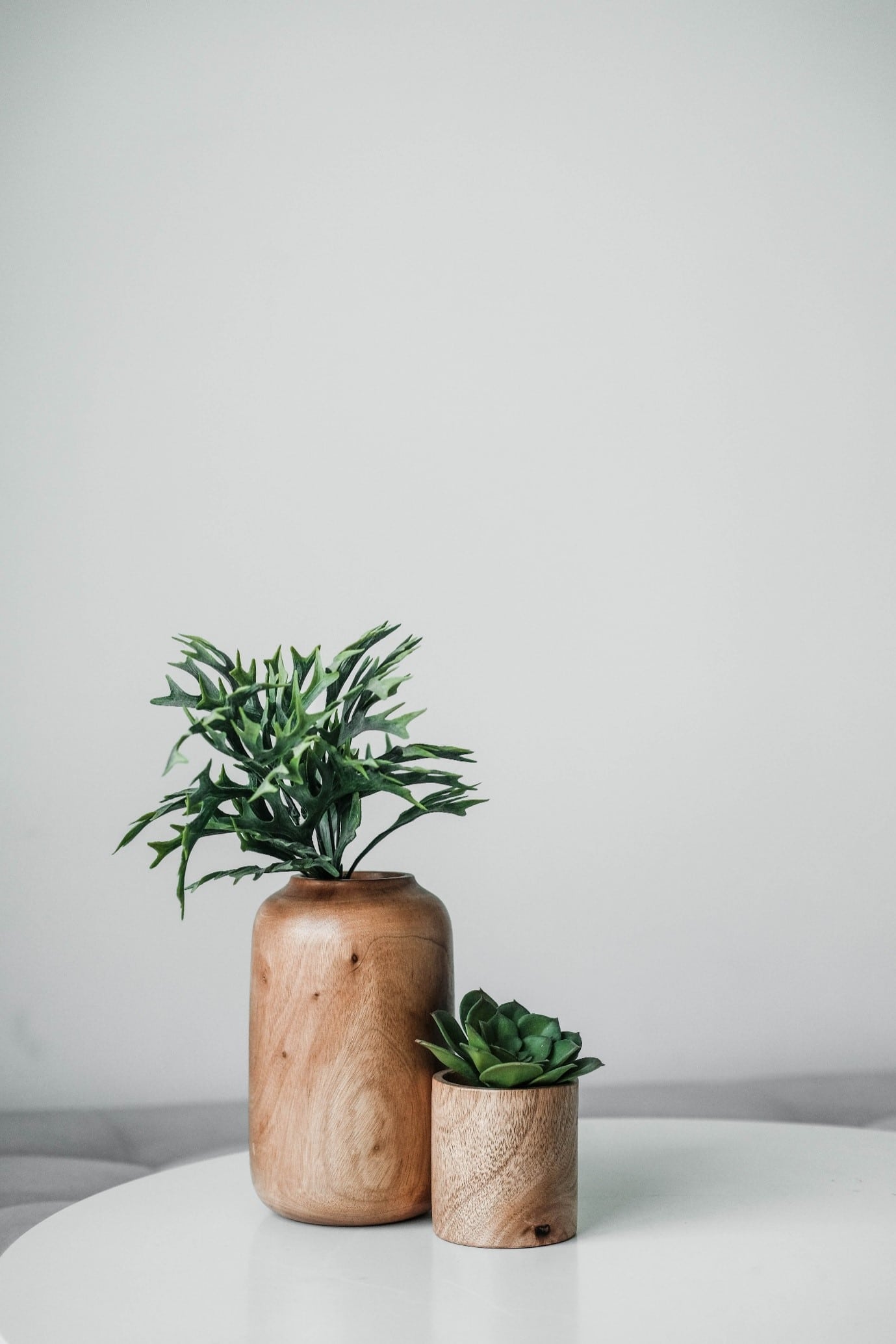
15. Iconic cacti
How about an attention-seeking group of classic, Wild West flavoured cacti in gorgeous terracotta pots? Go for a simple yet stunning container arrangement. It really highlights the striking forms of these traditional succulents. They make such fabulous statement plants. Love the classic Tex-Mex vibes of cacti? Consider incorporating succulent euphorbia acruensis (aka Cowboy Cactus) which mimics the classic shape.
Need more info on retaining wall design? We have heaps of suggestions in our article on retaining wall ideas.
16. Pool cacti
They have strong graphic forms that create bold reflections in pool water. So they’re an ideal choice to place in containers around the perimeters of your pool. They look especially striking when grouped—the more the merrier. But you don’t need the pots or the plants to be absolutely identical. Just keep them within the same style family to harness the pleasing visual effect of repetition and pattern.
17. Ghostly blues
Have a monochrome home façade? Pale and interesting silvery grey tones from agaves help soften up the colour scheme and provide lovely contrast. You can’t go wrong with these large silvery-blue spiky plants. Hypnotically symmetrical, they form graphic spines in pretty rosettes. I really like how the shadows of agaves make beautiful patterns on the walls. You can enhance the drama of your succulent garden by adding judicious lighting—find a landscape lighting expert near you.
18. Dragon tree
Similar in appearance to a palm tree, but a true succulent, the dragon tree (Dracaena Draco) is another show-stopping plant. It makes a fabulous feature whether planted in the garden or in a pot.
Prized by landscape designers as an architectural or structural plant for their strong impact as a focal point in gardens. Dragon trees look amazing paired with succulents with contrasting foliage. For example, senecio (blue chalksticks). Their genuine succulent nature means they are ideal drought-tolerant plants for dry climates.
19. Celebrate diversity
For maximum impact, contrast drastically different succulents and containers. They look quirky with their wildly varying forms. And a minimalist setting allows the plants to take centre stage. Succulents thrive in containers. Just ensure you give them a fast-draining cactus mix and ensure they have good drainage and then water really sparingly.
20. Layering elements
The great thing about planters is that you’re not locked into long term design and you can change things up depending on your mood or the season. When you’re putting together a container of succulents, go for maximum textural impact and colour saturation to make a statement. Try to contrast at least three to six plants by texture, height or colour.
21. Mini succulent garden ideas
Not all succulent gardens are dramatic outdoor landscapes. At the other end of the scale are little container arrangements of miniature succulent gardens. Aficionados of these tough little guys keep them indoors in everything from teacups to terrariums.
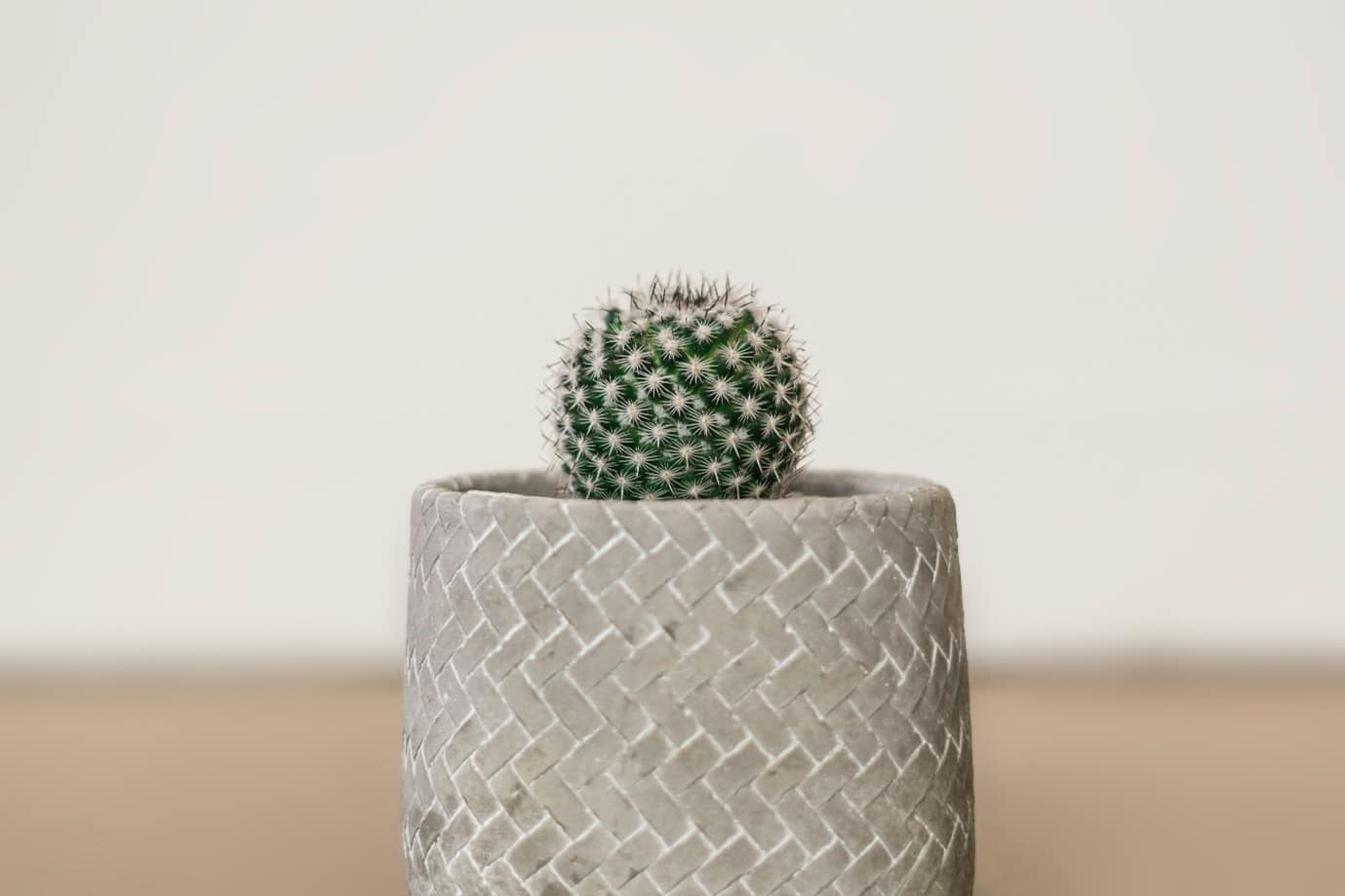
22. DIY succulent garden ideas
The trick to miniature succulent gardening is to choose species that stay small. These include echeverias, sedums (stonecrops), haworthias and kalanchoes. They are inevitably cute thanks to their adorably small size and pastel colours. And these petite and romantic miniatures make gorgeous indoor succulent gardens.
They also look magical in little kids’ rooms, fairy gardens, even living picture frames. Or place in a farmhouse bathroom in charming old wooden crates.
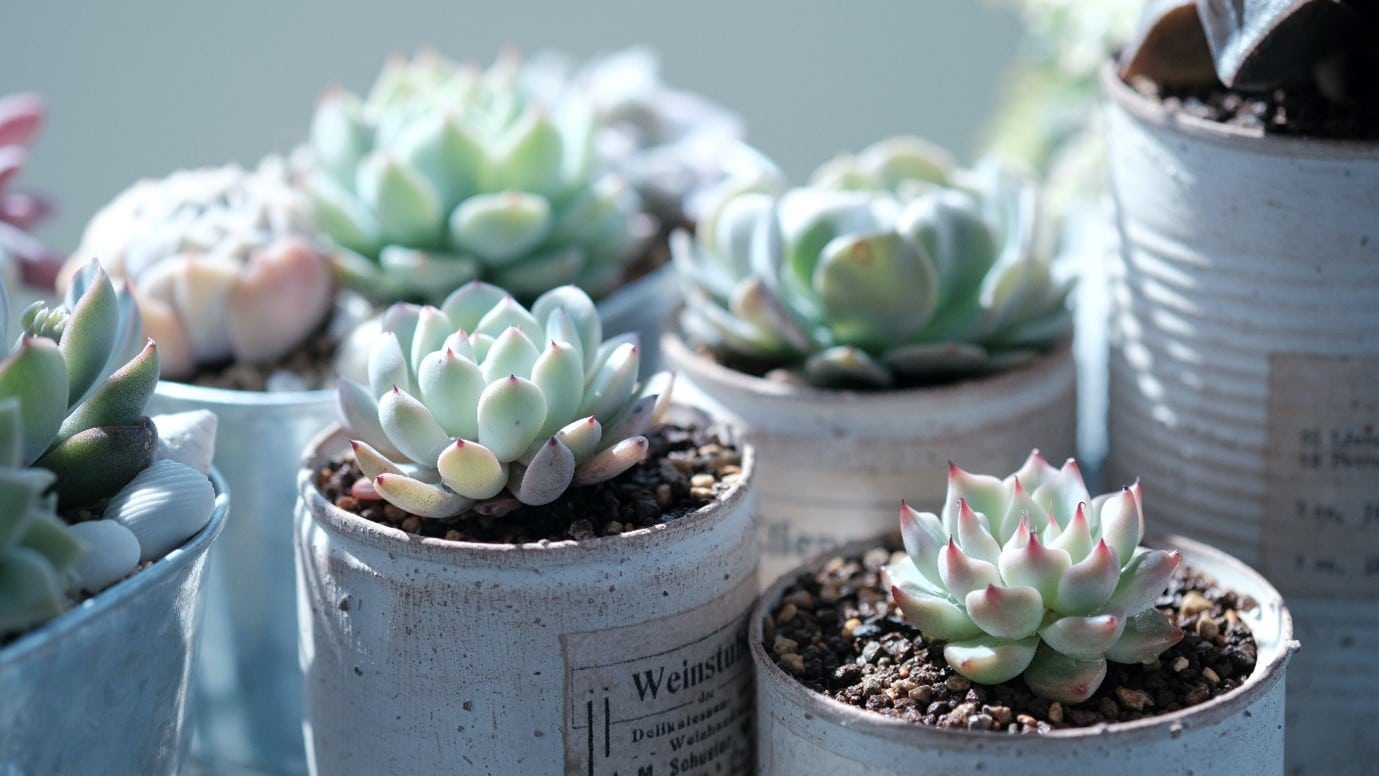
23. Patio succulent garden
Growing your mini succulent garden in interesting containers naturally makes them portable. This is of course a huge plus for renters or city dwellers without gardens.
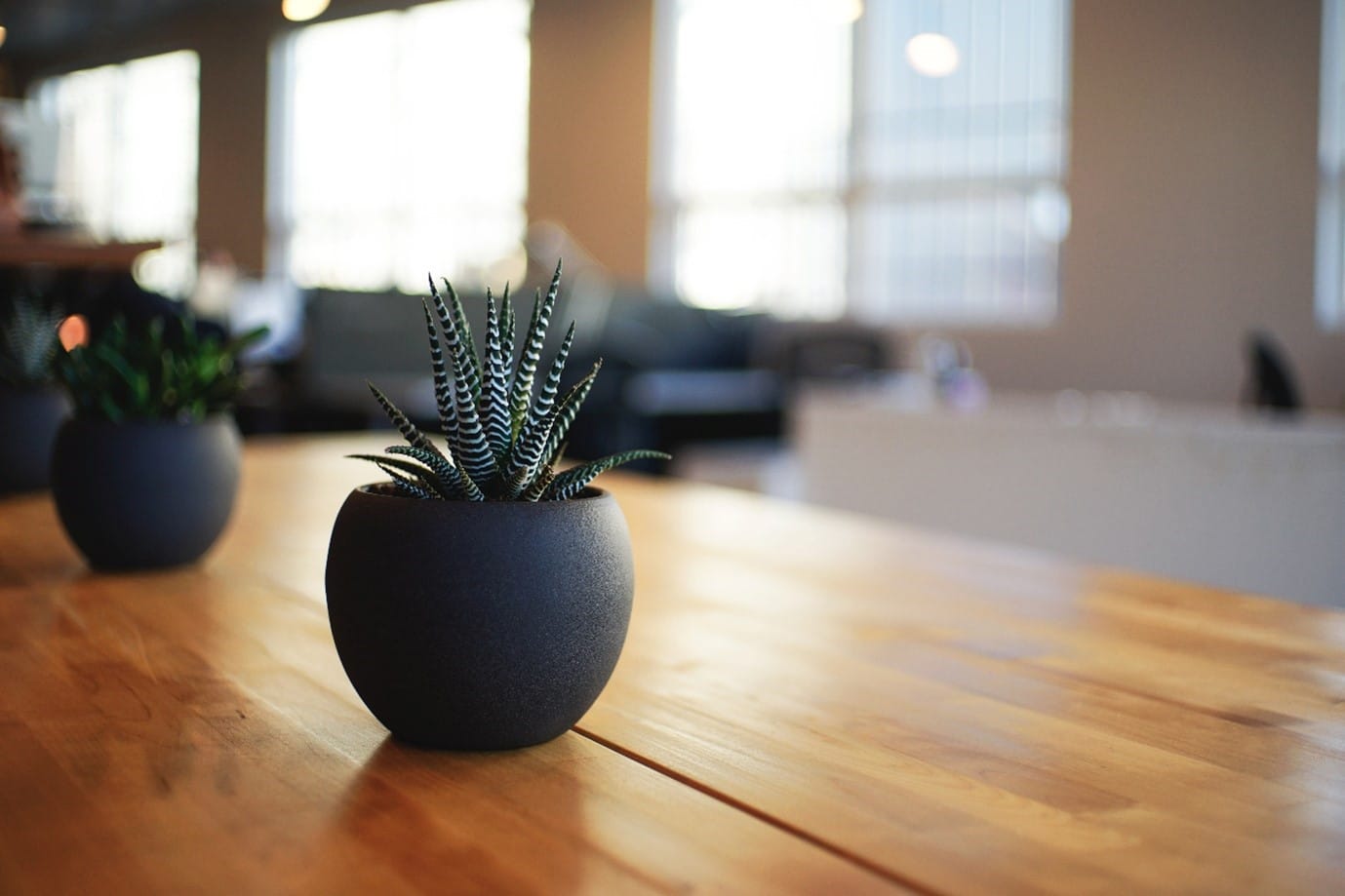
24. Succulent pathway trim
Succulents are ideal for edging garden beds, borders and paths. Especially if you choose gorgeous low-lying rosette-forming plants like echeveria or sempervivums. Their natural symmetry is visually stunning and they will happily reproduce to form dense clusters to fill the space. You can find succulents in almost any colour, from pale pinks to blues to blacks, so that you can create the palette of your dreams. And they’ll reward you by being low maintenance compared to thirsty annuals.
For more inspo, you might also like to read our recent article on garden edging ideas.
25. Side path succulents
You can vastly improve the look of a boring side path or that super narrow side yard by creating a pretty succulent garden in the often neglected space. Choose a simple, beautiful colour scheme but pick a range of different kinds of foliage to generate texture. Or go nuts with colour, succulents come in so many gorgeous colours.
You’re unlikely to want to grow lawn along the narrow strip of your side return. so it’s recommended that you fill the ground with rocks, which succulents are more than happy to grow in. And then it’s almost set and forget!
26. Go for the wow factor
Use colour to make a statement, picking bold singular colours for a dramatic impact.
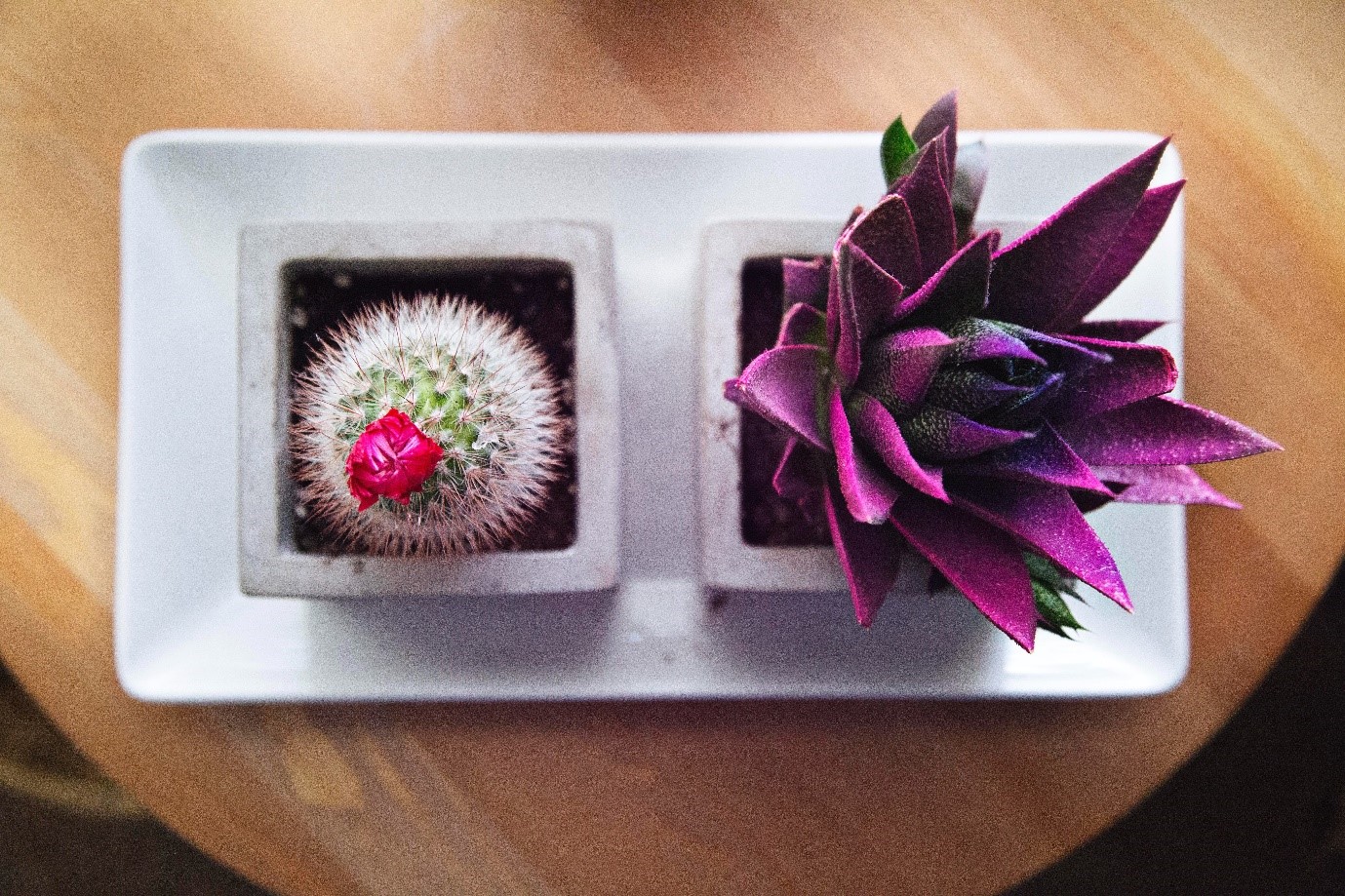
27. Box them in
Succulents lend themselves well to creative container compositions. There’s such a huge variety of striking architectural shapes and gorgeous colours to choose from. Go for a randomly-spaced mix of heights and textures, or layer them from tall at the back to shorter at the front.
For expert advice on creating gorgeous planter boxes, you can find someone near you to help or get some inspo from our article on raised garden beds.
28. Banding together
Create visual interest with bands of colour and texture. You simply do this by combining plants with differing characteristics. Choose a visually unobtrusive container that allows the plants to shine. A sample planting might be: at the base, plant trailing silver ponysfoot (dichondra argentea Silver Falls’). As a filler in the middle, plant purplish spiderwort (tradescantia pallida ‘Pink Stripe’). Then add mother-in-law’s tongue (sansevieria trifasciata) which can soar up to three feet. You can get a similar textural effect as spiderwort by using euphorbia hybrid ‘Diamond Frost’. As a bonus, it constantly bears white flowers.
29. Succulent surprise
Beautify a tiny crevice or a bit of broken path in your garden or on the patio with a sprinkling of succulents in a magical colour. Succulents are very happy wedging themselves between rocks and into cracks. They will colonise the space, so you don’t need to overthink the planting.
Some of the little rosette-formers like echeverias and sempervivums are ideal hardy survivors. Perfect to let ramble between gappy bricks or to cover up ugly cracks in concrete. It’s not a “succulent garden” as such. But planting up succulents into rock walls and crevices is a rewarding way to feature these sweet little critters.
30. Patio feature
For the ideal patio planter out the front of your home, mix a selection of low-maintenance succulents with similar forms but in a mosaic of colours. For a classic coastal look, choose a crisp white container that really pops against patio decking and plants.
If you’re searching for more inspo for your patio decking, make sure you check out our article on beautiful decking ideas.
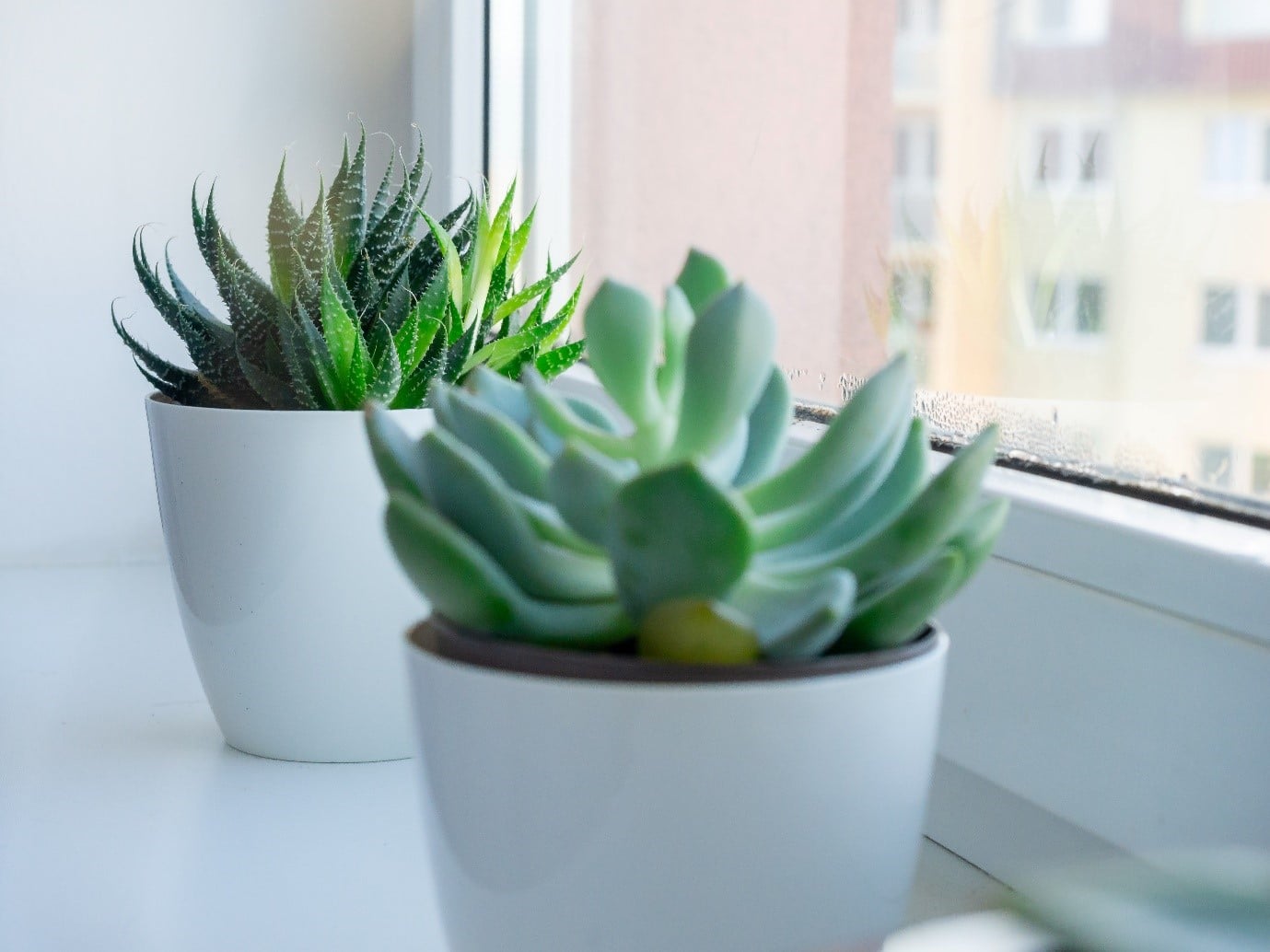
31. Monochromatic magic
Love a monochrome colour scheme? Group your succulents in a matching set of striking black containers like oversized matte black ones. The stark simplicity of the pots will allow the gorgeous architectural forms of the plants to really stand out and be appreciated.
32. Go for a cascading plant
Choose something with a striking natural shape to make a statement, such as one of the cascading succulents like donkey’s ears or chain of pearls. Trailing succulents are wonderful for softening up hard edges in your garden and add a touch of romance with their gently weeping form.
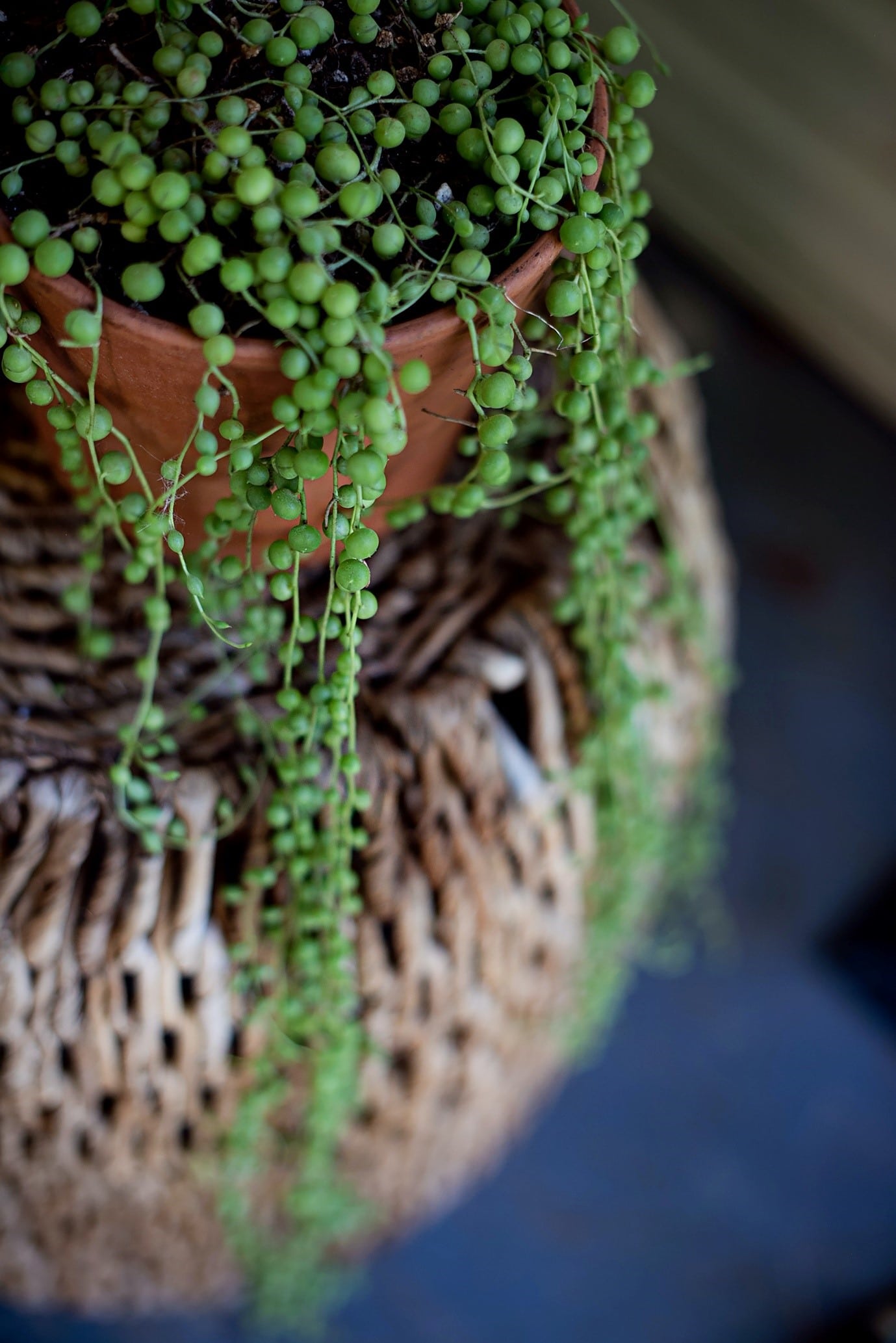
There are so many different ways you can incorporate succulents and cacti into your garden. I hope that these succulent garden ideas have given you a taste of the design possibilities that these wonderful plants have to offer. Or perhaps you already have a succulent garden and would like to share your experiences of succulent gardening in the comments below? I’d love to hear.


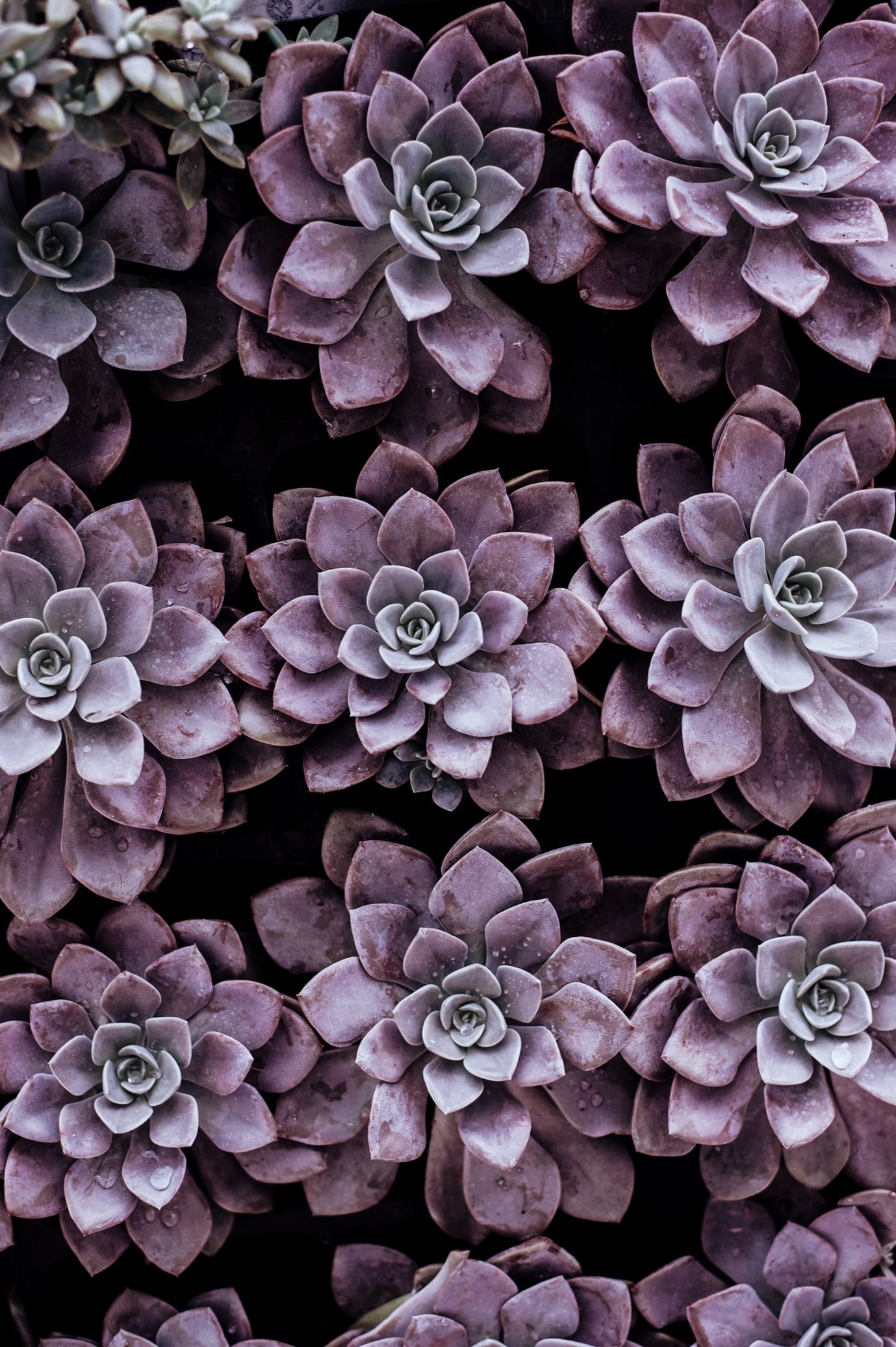
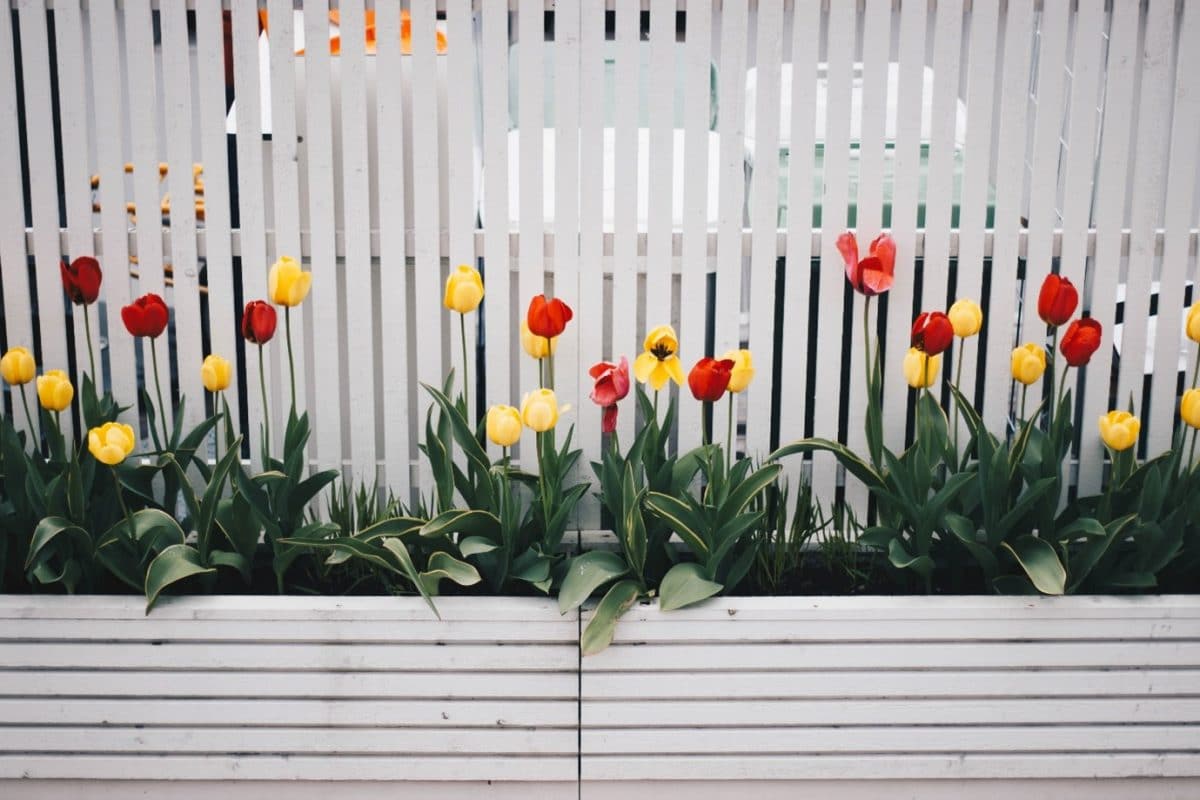
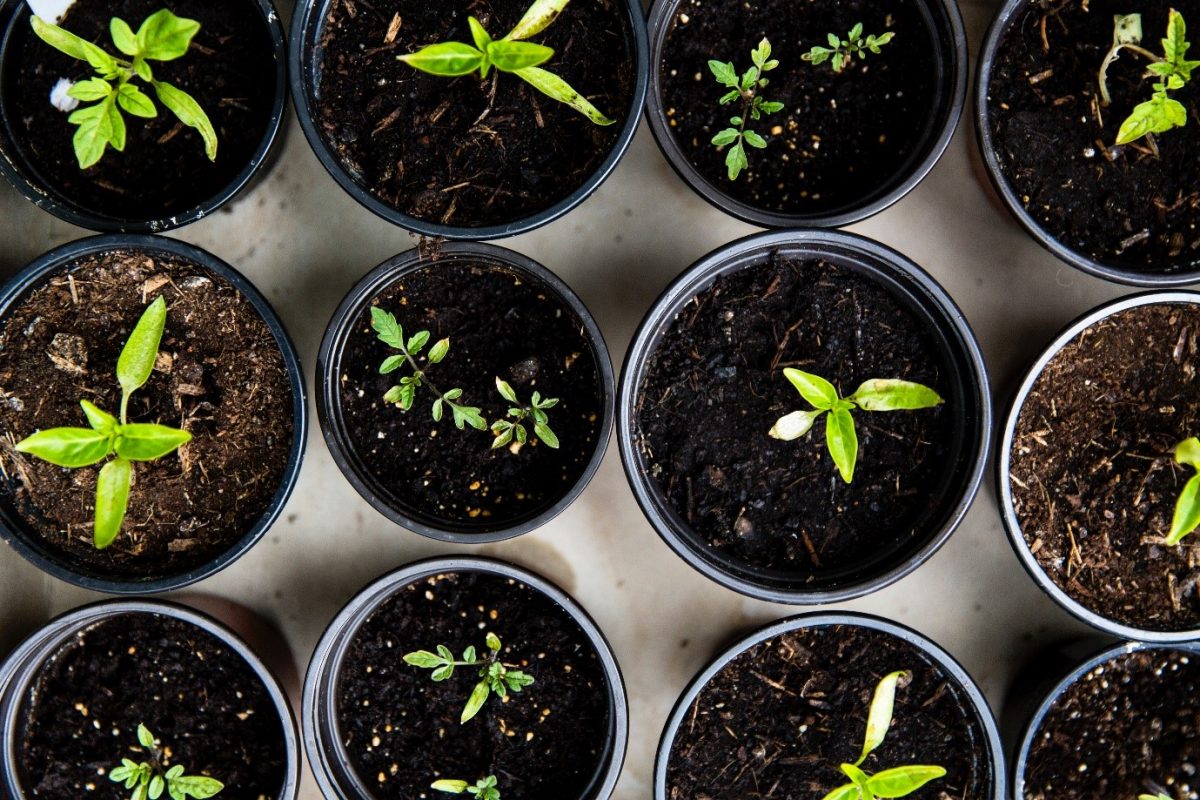
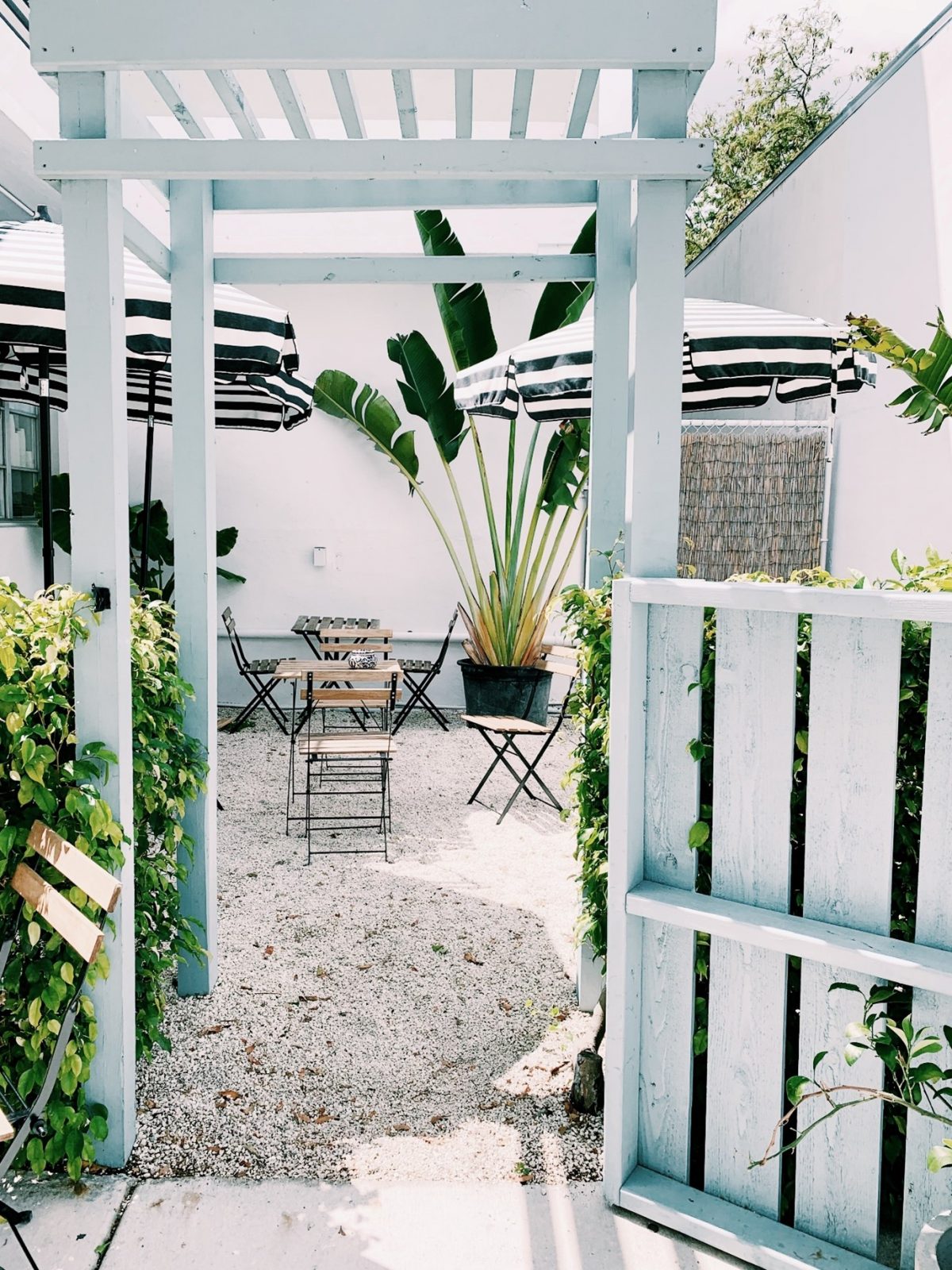
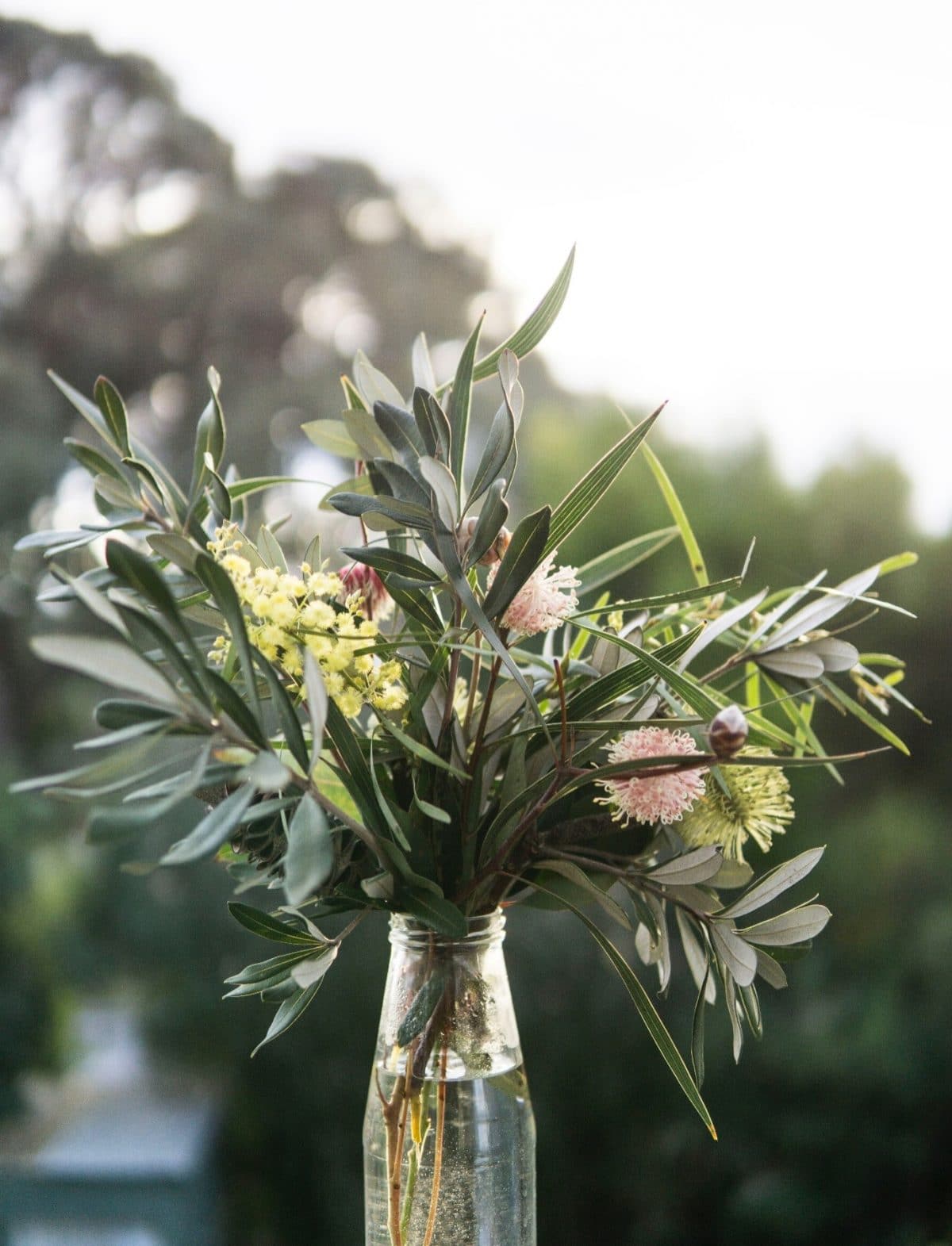
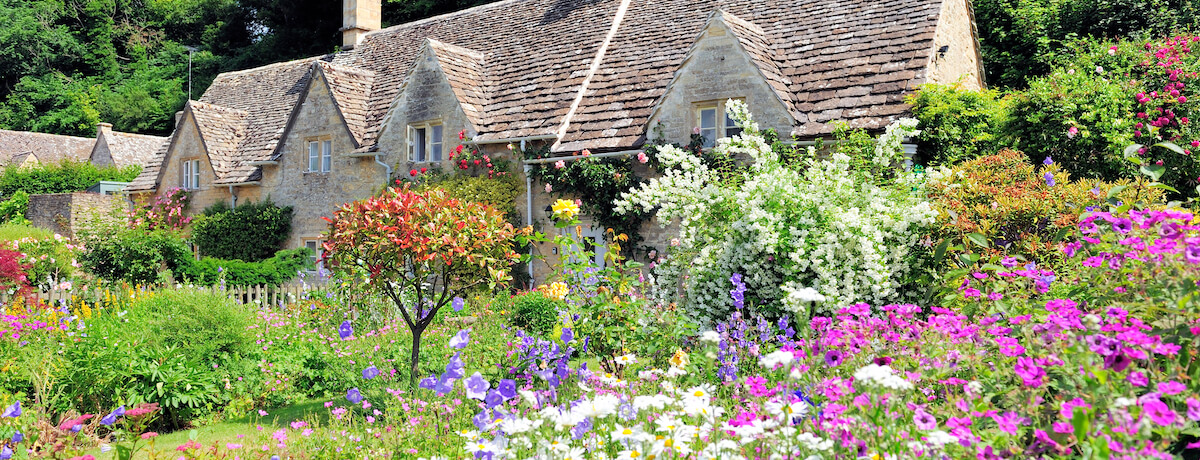
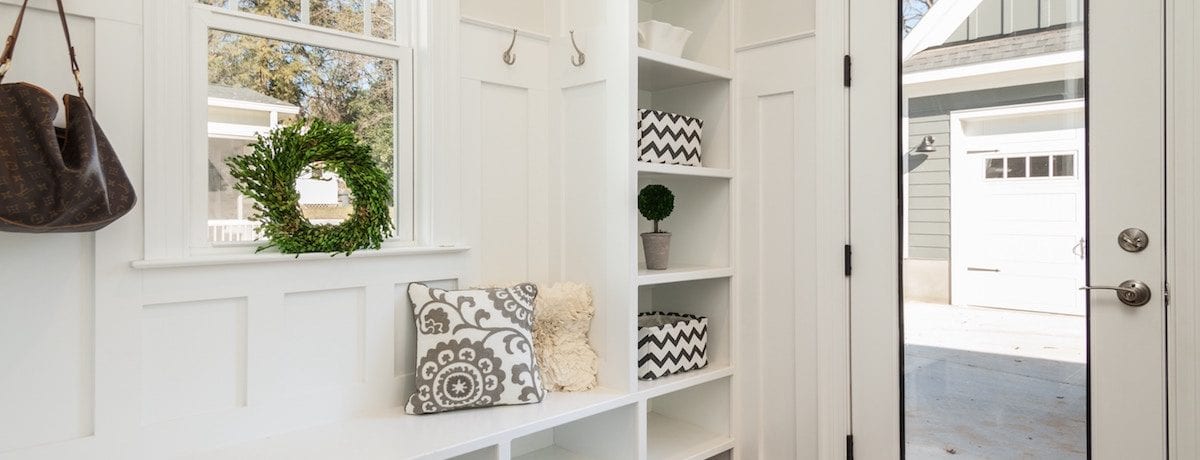
What lovely plants! You know what, your ideas are so interesting and for me, as a Vancouver Landscaper this article is truly helpful. Thank you for sharing, I hope I will read more article from you
I absolutely loved all the pictures. Thank you so much
Just love working with cuties . Very low
maintenance. Also created a patio full of the
adorables .love to increase in varieties
I wish your ideas came with pictures. It’s no good telling someone like me who loves cactuses, but doesn’t know their names, what to plant, because I haven’t a clue of what you’re talking about.
Would love some visual ideas
Hi Michele, thank you for your comment. Yes, I understand completely. Unfortunately I’m limited to using copyright-free images which are quite general in nature. If the internet doesn’t give you the answers you seek, your best bet really is to visit your local nursery where they can advise you and show you specimens. Hope this helps. Thanks, Gianna